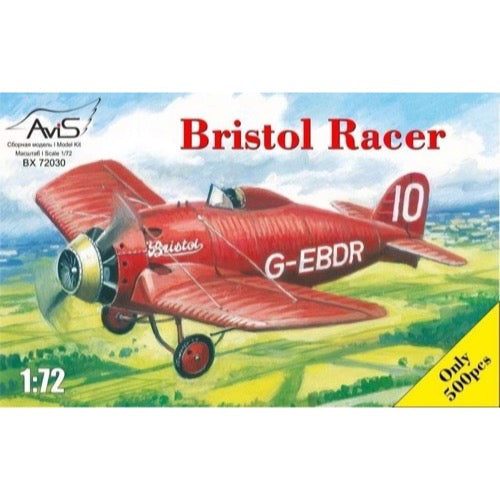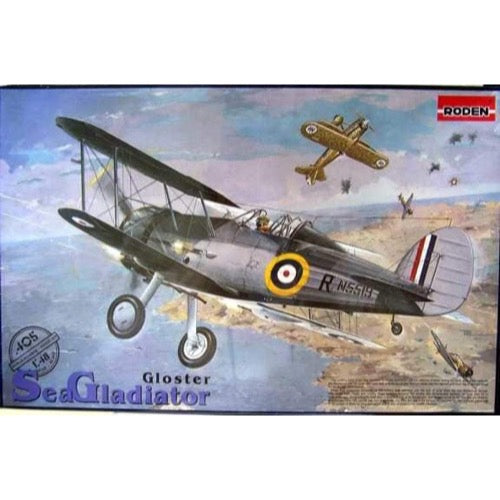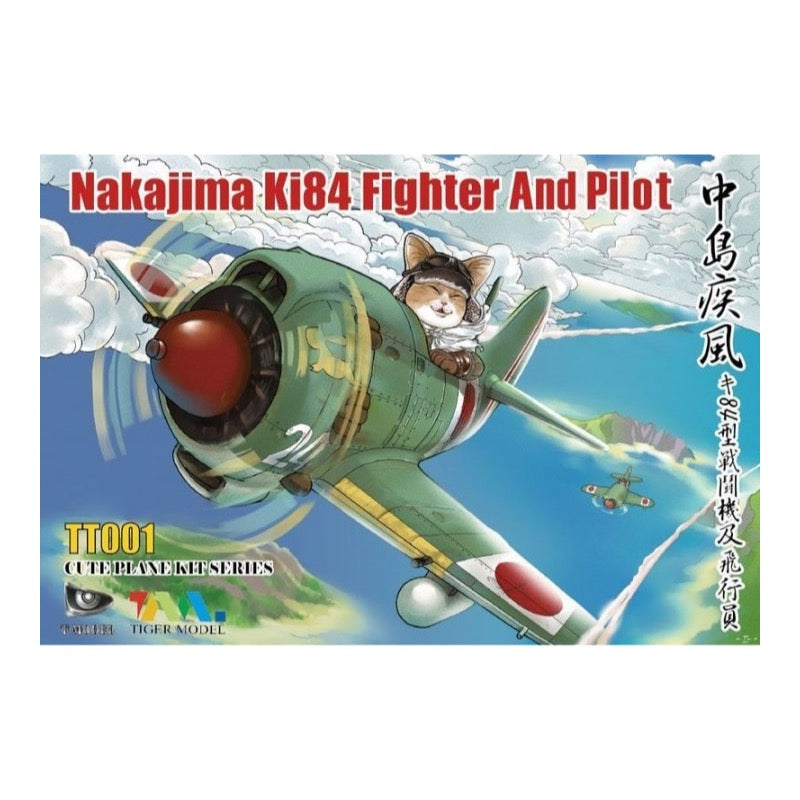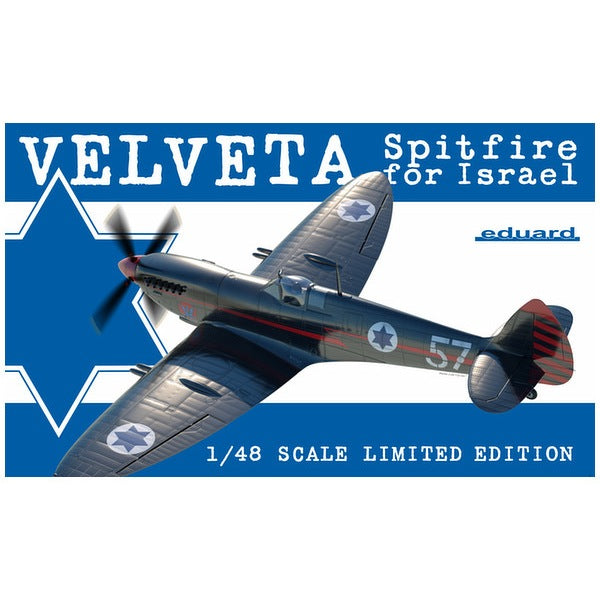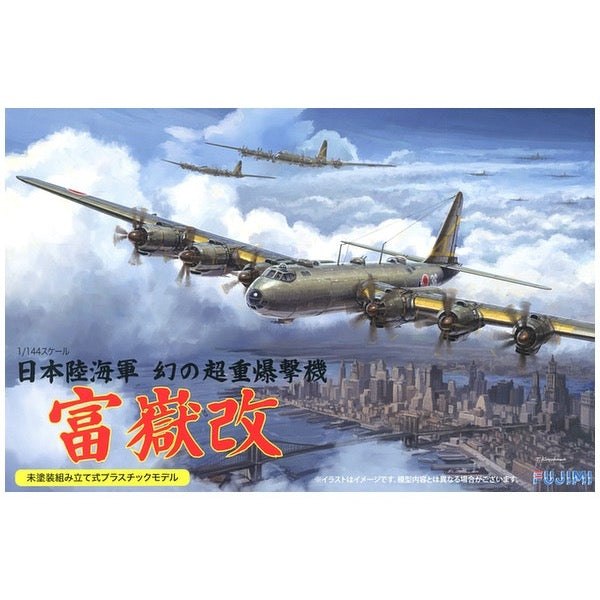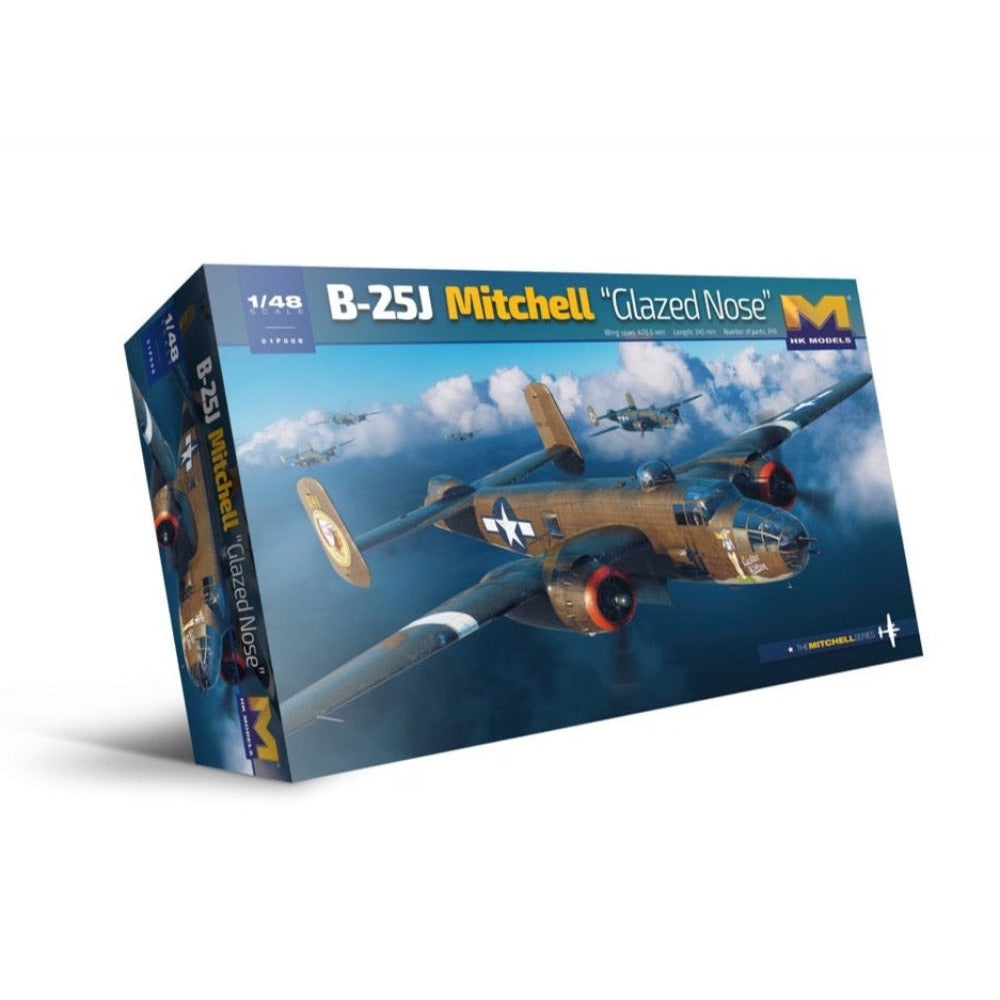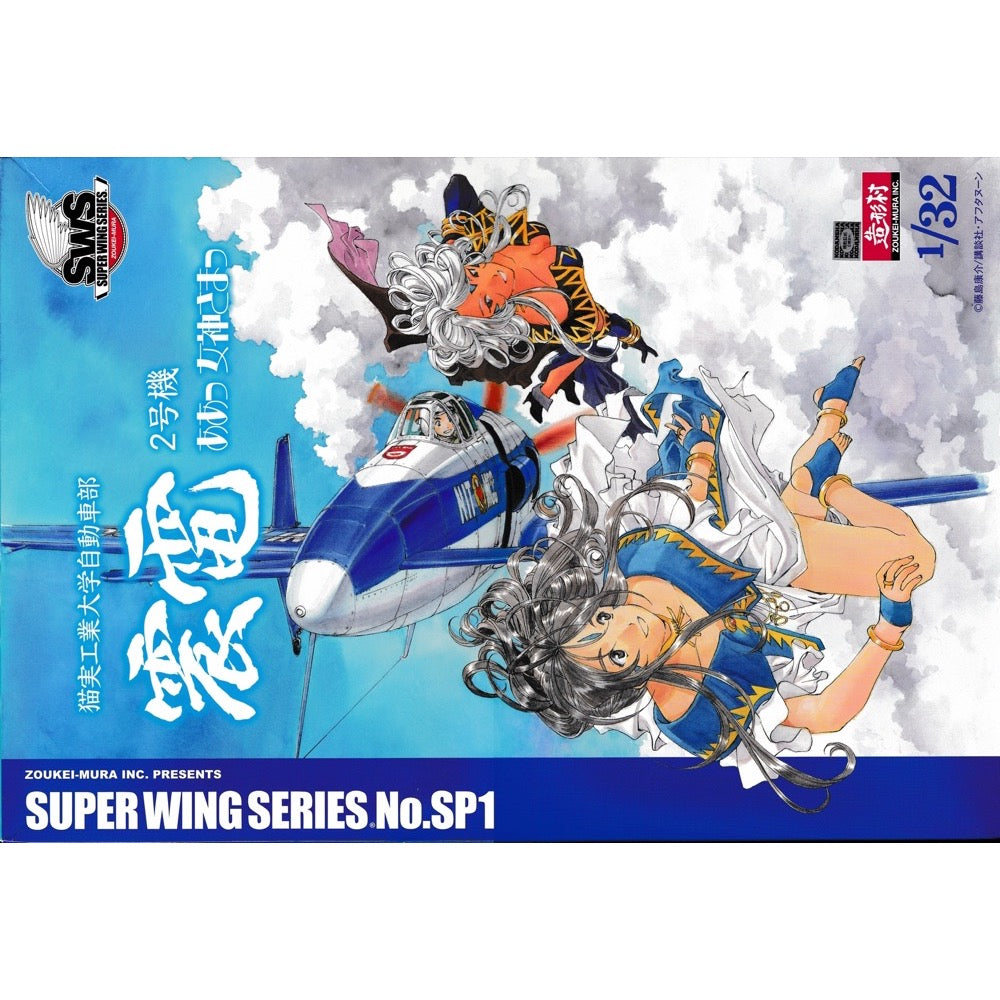
Zoukei Mura SWSSP01 1/32 J7W1 Shinden 2nd Edition Ah! My Goddess
83.00
$
This special Shinden kit comes with an extra front cowling, instrumental panel, and decals to recreate the Shinden which appeared in the comic. <br>You may, of course, build your Shinden kit without using these extra parts, just like the original model! Parts formerly molded in light gray are white in this special version. <br>The box art is an exclusive for this kit drawn by the comic artist Kosuke Fujishima.
<p> </p>
<h3>FEATURES</h3>
<ul>
<li>Total Parts: 254</li>
<li>4-color molded parts including clear.</li>
<li>1 Shinden Kit</li>
<li>1 Extra Front Cowling</li>
<li>1 Extra Instrumental Panel</li>
<li>1 Extra Decal</li>
</ul>

Trumpeter 03915 1/144 PLAAF J-11B Fighter
10.00
$
<p>High quality, precision <a>plastic model kit</a>. <a>Paint</a> and <a>glue</a> not included. Requires assembly and painting. For intermediate to advanced skill modellers.</p>
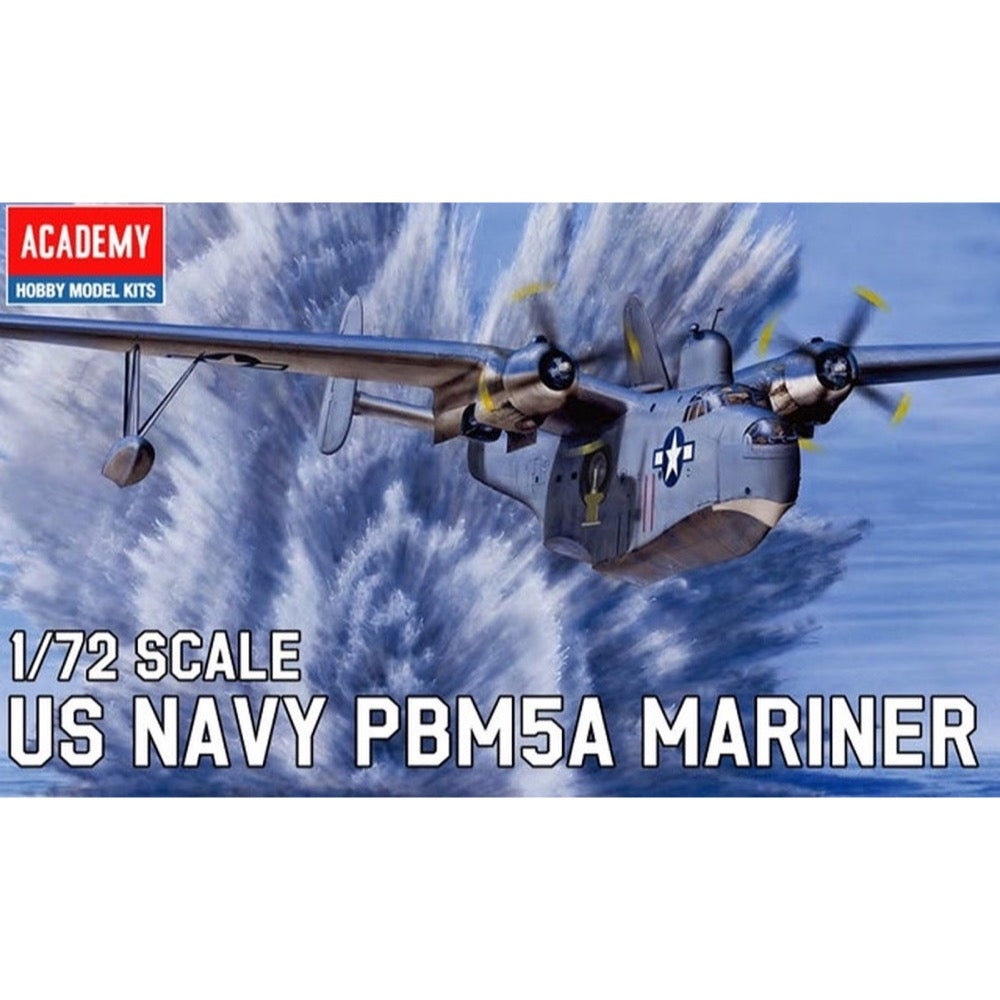
Academy 12586 1/72 USN PBM-5A Mariner Flying Boat ca.1947-58 RAAF markings included
26.00
$
<p>Long-range patrol bomber flying boat developed by the Glenn L. Martin Aircraft Company during World War II for the US Navy for anti-submarine warfare patrol (ASW) and US Coast Guard for search and rescue duties (SAR). It was the largest and most capable flying boat of its time. The post-war PBM-5A is the amphibian version with retractable tricycle undercarriage.</p>
<p>Reissue Minicraft kit. Movable and poseable rudder, ailerons & flaps, detailed engines with 2 cowl flap options (open and closed), detailed cockpit & opening bomb bays with detailed interior. Build with armed turrets or unarmed faired over turrets. Choice of 3-blade or 4-blade propellers. Markings for two post-war aircraft including prototype XPBM-5A BuNo 59349</p>
<p>This is an injection-plastic jet aircraft model kit.</p>

Modelsvit 72028 1/72 Ye-152A Soviet Twin-engined Interceptor Prototype
27.00
$
<p>The Ye-152 and Ye-152A were developed in the late 50’s from the Ye-150 interceptor by OKB-156 Design team.Due to the fear of possible malfunctions in the Ye-150’s R15-300 jet engine, the designers created second prototype under designation Ye-152A, powered by two R11F-300 engines, each having a maximum thrust of 3880 kgf or 5740 kgf on afterburner regime.The whole groundwork of the second E-150 was used for the construction of E-152A. It’s wing, vertical stabilizer and fin have the same geometrical dimensions and construction as the E-150 ones. The nose fuselage section was identical either, but the air intake cone of Ye-152A was not adjustable in comparison to E-150. The air intake regime was controlled by moving back and forthward the front shell rings.The Ye-152A was designed for carrying K-9 guided missiles, using new "CP-1" radar system, created by "Almaz" Design Bureau.In connection with the installation of the reliable R11F-300 engines, the Ye-152A modification had been prepared for the test before all E-150 and E-152 aircrafts.The maiden flight of Ye-152A was made on July 10, 1959 by G.K. Mosolov on the controls. Since the finalization of the flight tests in August 1960, the plane has performed in overall - 55 flights, and only 2 flights carrying dummies of K-9 missiles.The Ye-152A was demonstrated on public in 1961 at the Tushino airfield, receiving the attention of NATO experts, giving him the reporting name –“Flipper “(fin).</p>
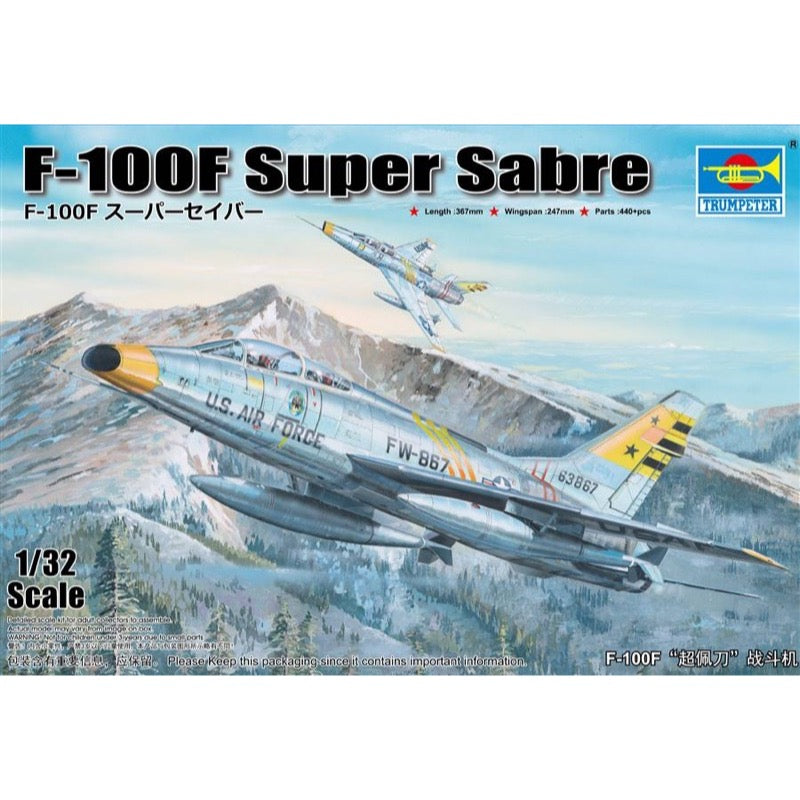
Trumpeter 02246 1/32 North American F-100F Super Sabre
87.00
$
<h3>F-100 Super Sabre was a supersonic jet fighter aircraft that served with the USAF.</h3>
<p>First flew on 25 May 1953, followed by the first production F-100 on 9 October 1953. The F-100F two-seat trainer entered service in 1958. It remains most the same weapons and airframe upgrades as the F-100D. The F-100F would conduct dangerous low-level missions to spot targets for other fighter-bombers, reconnaissance, SAR (search and rescue) and was the first “Wild Weasel” SEAD (suppression of enemy air defenses) aircraft. The “Hun” logged over 360,000 combat sorties during the Vietnam War until operations ended in 1971.</p>
<h3>Features</h3>
<ul>
<li>
<p>Fuselage</p>
</li>
<li>
<p>Detailed fuselage w/ accurate design Wing</p>
</li>
<li>
<p>Optional position flaps Engine</p>
</li>
<li>
<p>Highly detailed Engines Interior</p>
</li>
<li>
<p>Finely detailed cockpit, gear cabin,</p>
</li>
<li>
<p>Crew seats with photo-etched seat belts and harnesses.</p>
</li>
<li>
<p>Tire</p>
</li>
<li>
<p>Grooved rub</p>
</li>
</ul>
<h3>Specifications</h3>
<ul>
<li>
<p>Model Brief: Length: 367mm Wingspan: 247mm</p>
</li>
<li>
<p>Total Parts: 440pcs</p>
</li>
<li>
<p>Photo Etched Parts: 1 piece</p>
</li>
<li>
<p>Total Sprues: 18 sprues and tires</p>
</li>
</ul>
<p> </p>
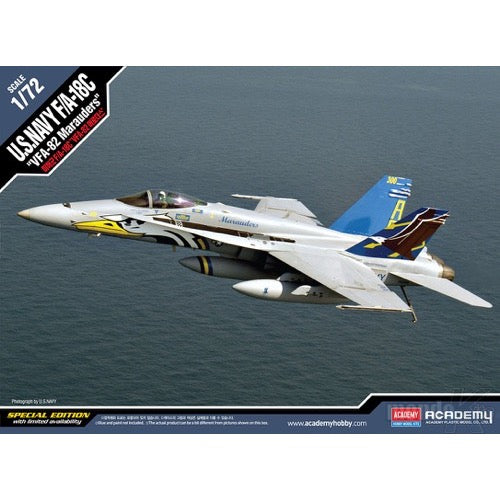
Academy 12534 1/72 F/A-18C U.S Navy VFA-82 "Marauders" Le: Hornet
15.00
$
<p>The McDonnell-Douglas / Northrop F / A-18 Hornet is a carrier-based combat and attack aircraft capable of operating in all weather conditions. The roots of the F / A-18 go back to 1974 and the prototype of the F-17, which was of interest to the US Navy command that year. The contract for the serial construction of the aircraft was concluded in 1976. In order to speed up the work, Northrop entered into cooperation with McDonnell-Douglas. As a result, on November 18, 1978, the test flight of the prototype took place, and a year later - successful landings on the aircraft carrier. Since 1982, the aircraft has been delivered to linear units with General Electric F404-GE-402 engines as the propulsion unit. The aircraft is produced in several versions. The first were the F-18A (fighter) and F-18B (trainer). Foreign orders from Spain, Canada and Australia appeared quickly. In 1987, a version of the F-18C was created, adapted to the use of AMRAAM missiles. A year later, the two-seater F/A-18D version of the F-18 entered service, adapted for operation in all weather conditions, which could serve as an attack aircraft. On its basis, the reconnaissance version of the R/F-18D was created. The newest versions (the so-called Super Hornet) -F/A-18E and F/A-18F are highly modified versions of the F/A-18D. They are characterized by an increased length of the fuselage, wingspan and their area. They also have new General Electric F414 engines and significantly expanded and modernized avionics. They were first presented in 1995. The EA-18G Growler electronic warfare aircraft was also created on the basis of the F-18. All versions of the F/A-18 met with the favor of pilots, are characterized by a low failure rate, ease of operation and very good flight parameters. Hornets took part in the operation against Libya in 1986 and Operation Desert Storm in 1991. Technical data (version F/A-18 C): Maximum speed: 1915 km/h, rate of climb: 254 m/s, practical ceiling 15 240 m, maximum range: 3340 km, operational radius: 280-740 km, armament: fixed- single six-barreled 20 mm M61A-1 cannon, underslung - up to 7700 kg load.</p>
<p>This is an injection-plastic jet aircraft model kit.</p>


